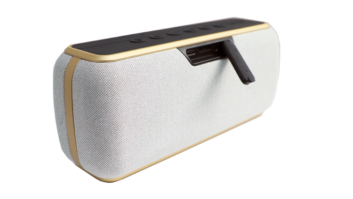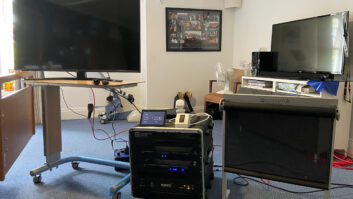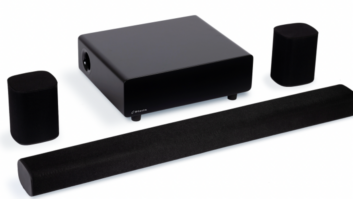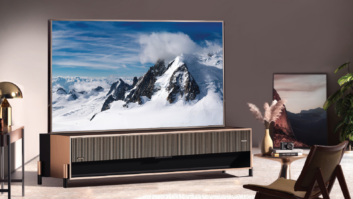Kids develop brand affinity and aspirational thinking pretty early on. I – like many boys that were young in the 80s – had a Lamborghini poster on my bedroom wall many, many years before I could even think about getting a driver’s license, not to mention that it cost more than the house we were living in. But still, the desire for that red Countach was there. And still is there.
I’d like to tell you another little story from my past that perfectly illustrates this point.
My dad owned all of the Ian Fleming James Bond novels, and sometime back in high school, I started reading all of them. I loved Bond’s style and swagger and uncanny sense of always knowing the perfect thing to do or say in any situation. The perfect drink, the perfect car, the perfect weapon, the perfect detail to his wardrobe, the perfect line to a villain or woman.
For a teenager, the idea of always being perfect was pretty appealing.
One of the things that I loved about the books was that Fleming’s Bond was always ultra-specific and detail oriented. Bond would never drink just any champagne, but rather a Dom Perignon or a Tattinger, and even that of a specific vintage. His smoking habits required utmost attention with custom made Morlands of Grosvenor Street (with three gold rings), a black oxidized Ronson lighter and a Dunhill case. His shirts imported of Sea Island cotton and his Walther PPK carried in a Berns-Martin triple draw holster.
And just as he was specific in everything else, Bond would never wear just any watch. In the books, Bond’s timepiece of choice was always a Rolex.

As a teenager with a dad that made him sign a bank prepared promissory note with full payment default schedule for the money he loaned me for my first car (really), I can assure you that buying a Rolex was not within the realms of things that were going to happen.
Even still, I can’t tell you how many trips I took to the mall to look at Rolex watches or to ask for the latest bit of literature. And even though I was 16-18 and probably looked like I could barely afford a slice of pizza and Coke, the jewelers were always very patient and accommodating, pulling the watch out of the case, going through the ritual of shining it up and then letting me try it on. I remember one time after trying on the Submariner for the umpteenth time, the jeweler asked me if I’d like to try on something really special. He reached under his case and produced a gold and diamond covered Rolex that he said he been ordered for a customer and sold for $50,000.
Think about the impact this had on a teenager: instead of being exasperated by a kid looking at something beyond his affordability, or quickly brushing me off and moving on to the next person, he took a little bit of extra time and let me experience something many times more expensive.
Now, it was years before I was actually able to afford a Rolex (a stainless Submariner with date, just like Bond), but by being treated well, and recognizing them on the arms of others, the desire to one day own the Rolex brand was instilled and never faded, and I always returned. And, finally, when my circumstances allowed, I proudly went down and bought one. From a different jeweler on the other side of the country.
Our industry can actually learn a lot from this.
We frequently work with affluent clientele that have children of different ages. And we likely have occasion to interact with – or not – these children numerous times throughout the course of a project or during our on-going relationship servicing and supporting these systems. In fact I know there have been clients that we have worked with for such a length of time that the children have grown to be old enough to buy their own homes and then engage our services.
So, think about how you interact with these children. Are you being an ambassador for your brand/company and for technology in general? Or do you instead dismiss them or treat them as a distraction? Even if you are completely polite, what if instead you actually went out of your way to cater to them? To demonstrate things to them on their level and involve them in the system design? What kind of movies do they like? What kind of music do they listen to? How would they like it to sound or perform?
You know what’s awesome on a home theater system? Videogames. Connect an X-Box, PlayStation, or whatever, hand them a controller and show them how great those games can look and sound and what an amazing experience technology can provide.
Think that might leave a lasting impression on them? Or more so, what if they have friends over and they show off the system to them? Think that maybe those kids might go back and tell their parents about it? From the mouths of babes…
I know that I have been guilty of missing – possibly even squandering – some of these opportunities in the past. I can’t tell you how many times some young person has walked into our showroom asking if we install car stereo or has needed something simple like a cable for an iPod. What if instead of saying we don’t do car stereo, or just handing him a cable, I had taken the time to sweep them into our high-end theater and spent five minutes giving them a demo they’ll likely never forget? Or sat them in front of a pair of really nice speakers and opened their minds as to how great [insert name of hip band here] can sound on a real stereo?
Sure, these kids aren’t our target demographic and probably can’t even afford many of the things that we sell. But these kids will grow up. And they are destined to be our next generation of customer. Why not plant the seed now, and instill the desire and aspiration that there is something better out there? Something better that you can provide for them.
At worst, you’ve spent a few minutes giving a demo to someone who will leave and never come back and you’ve honed your demonstration skills. More likely you’ll have given them an experience they will remember for years and tell others about. At best, well, maybe they’ll bring their parents back and actually purchase a system from you.
But every time you invest time in educating and winning a young person over to technology, consider it paying it forward to the industry. Like me, that person may not return specifically to you to make a purchase, but they will likely seek out one of your brother installers somewhere else wherever they end up. And, if you’re lucky, one day a young person that has been well treated by some other installer will happen across your door.
John Sciacca is principal of Custom Theater and Audio in Myrtle Beach, SC.






